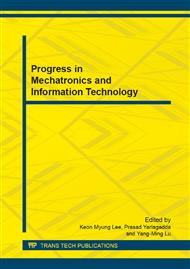p.884
p.891
p.896
p.900
p.905
p.910
p.915
p.920
p.924
Research on the Choice of Quality Signal of B2C Enterprise under Asymmetric Information
Abstract:
Firstly, this paper analyzed the characteristics of the quality signal of the products in B2C e-commerce enterprise based on a large number of documents. And then, according to the game theory, it proposed a risky avoidance model of the quality signal selection of the products of e-commerce enterprises under asymmetry information. Lastly, it summarized several strategies about the quality of the products of signal selection in B2C e-commerce enterprises based on this model.
Info:
Periodical:
Pages:
905-909
Citation:
Online since:
November 2013
Authors:
Price:
Сopyright:
© 2014 Trans Tech Publications Ltd. All Rights Reserved
Share:
Citation:


